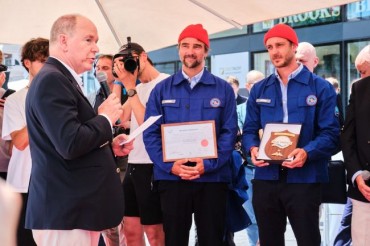NORCROSS, Ga., Oct. 16 (Korea Bizwire) — Patients could face increased risk of pressure ulcers due to false and misleading advertising and promotional activity by Smith & Nephew, according to new allegations in a pending lawsuit filed by Mölnlycke, a world-leading medical solutions company. The suit asserts that Smith & Nephew’s claims about the ability of its Allevyn® Life wound dressings to prevent pressure ulcers mislead healthcare decision makers into purchasing a product that lacks clinical evidence.
“Misrepresentation of facts about medical devices can expose patients to an increased risk of unnecessary pain and suffering. With a recent randomized clinical trial (RCT) demonstrating an 88 percent reduction in pressure ulcers,1 our Mepilex® Border Sacrum has been proven effective in multiple published and peer-reviewed clinical studies, including four published RCTs.1-8 No other 5-layer foam dressing relies on as many rigorous clinical studies,”2,7,8 says Mölnlycke CEO, Richard Twomey. “Our proprietary Deep Defense™ technology is unique and is not replicated by any other 5-layer sacrum dressing.”9
The lawsuit alleges that: “Each year more than 2.5 million people in the U.S. develop pressure ulcers, resulting in 60,000 patient deaths.10 In addition to causing unnecessary patient pain, suffering, and mortality, pressure ulcers are costly for hospitals due to longer stays, denial of payment and potential litigation. Management of pressure ulcers costs the healthcare system $11 billion annually.”11
The lawsuit further alleges that, “A latecomer in the area, Smith & Nephew has made false, misleading, and unsubstantiated advertising claims, including those which compare its Allevyn Life dressings to Mölnlycke’s Mepilex Border dressings.” Mölnlycke alleges that “these advertisements injure it, but more importantly, put patients at risk of unnecessary suffering and death. Mölnlycke pursues this action to stop Smith & Nephew’s false, misleading, and unsubstantiated advertising.”
The suit outlines several instances of misleading claims by Smith & Nephew through advertisements, news releases, websites, brochure and trade shows. As detailed in the filing, Smith & Nephew has:
- Claimed a 2013 publication in the International Wound Journal12 showed its product could reduce treatment costs substantially, even though the publication was about an RCT that did not include Allevyn Life.5 Led by Professor Nick Santamaria, a leading authority on pressure ulcer prevention, the RCT included only Mölnlycke’s Mepilex Border Sacrum and Mepilex Heel.5
- Asserted that a 2016 study13 at Sidney & Lois Eskenazi Hospital in Indianapolis demonstrated its product had reduced hospital-acquired pressure ulcers (HAPUs) by 69 percent. However, the HAPU incidence rate had already declined by 60 percent before Smith & Nephew’s product was added to the study.
- Made false, misleading, and unsubstantiated claims that its products delivered greater pressure ulcer protection than Mepilex Border based on laboratory pressure redistribution studies, including one that simply positions a steel ball on a dressing that has been placed on a pressure mapping pad, despite no evidence that the tests correlate to protection in humans. Indeed, Smith & Nephew’s steel ball test is criticized in published literature.14
The new allegations were filed in the U.S. District Court for the Northern District of Georgia. The action expands on a lawsuit originally submitted by Mölnlycke in April 2017.
MEDIA CONTACTS:
U.S.: Paul Vetter 614.406.4968, pvetter@blrfurther.com
Global: Jenny Johansson, +46 739 41 29 23, Jenny.Johansson@molnlycke.com
About Pressure Ulcers
For further information about Pressure Ulcers please visit the National Pressure Ulcer Advisory Panel website.
About Mölnlycke
Mölnlycke is a provider of high-quality solutions for customers, healthcare professionals, organizations and patients worldwide. We develop and bring to market innovative wound care and surgical solutions along the entire continuum of care from prevention to post-acute settings. Our solutions provide both clinical and financial value, supported by clinical and health economic evidence. www.molnlycke.com.
References:
1 Kalowes, P., Messina, V., Li, M. Five-layer soft silicone foam dressing to prevent pressure ulcers in the intensive care unit. American Journal of Critical Care, Nov. 2016.
2 Nahla Tayyib, RN, MN, BN, Fiona Coyer, RN, PhD, MScNsg, CritCareCert, PGCEA. Effectiveness of Pressure Ulcer Prevention Strategies for Adult Patients in Intensive Care Units: A Systematic Review. Worldviews on Evidence-Based Nursing. 2016; 00:0, 1-13.
3 Qiuli, B., Qiongyu, J. [Observation on effect of Mepilex on the prevention and treatment of pressure sores. Chinese Journal of Medical Nursing 2010.
4 Aloweni, F., Lim, M.L., Chua, T.L., Tan, S.B., Lian, S.B., Ang, S.Y. A randomised controlled trial to evaluate the incremental effectiveness of a prophylactic dressing and fatty acids oil in the prevention of pressure injuries. Wound Practice and Research 2017;25(1):24-34.
5 Santamaria, N., Gerdtz, M., Sage, S. et al. A randomized controlled trial of the effectiveness of soft silicone multilayered foam dressings in the prevention of sacral and heel pressure ulcers in trauma and critically ill patients: the border trial. Int Wound J 2015; 12: 3, 302–308.
6 Padula, William V. Effectiveness and Value of Prophylactic 5-Layer Foam Sacral Dressings to Prevent Hospital-Acquired Pressure Injuries in Acute Care Hospitals An Observational Cohort Study. J Wound Ostomy Continence Nurs. 2017;44(5):1-6.
7 Davies P. Role of multi-layer foam dressings with Safetac in the prevention of pressure ulcers: a review of the clinical and scientific data. J Wound Care 2016; 25: 1, S1–S24.
8 Molnlycke Health Care report: GMCS/2017/102/V4. Results of literature search for peer-reviewed journal articles and conference posters relating to dressings for pressure injury prevention (September 2017). Data on file.
9 Alten. Finite element analysis studying the effect of different prevention dressings on protecting soft tissues from high stresses and deformation. Ref No. 001. Data on file. 2017.
10 Preventing Pressure Ulcers in Hospitals. Content last reviewed October 2014. Agency for Healthcare Research and Quality, Rockville, MD.
11 Agency for Healthcare Research and Quality. Preventing pressure ulcers in hospitals.
www.ahrq.gov/professionals/systems/hospital/pressureulcertoolkit/putool1.html
12 Santamaria N., Gerdtz M., Sage S., McCann J., Freeman A., Vassiliou T., DeVincentis S.,Ng A.W., Manias E., Liu W., Knott J., Liew D. The cost-benefit of using soft silicone multilayered foam dressings to prevent sacral and heel pressure ulcers in trauma and critically ill patients: a within-trial analysis of the Border Trial. Int’l Wound J. 2013.
13 Swafford, K., Culpepper, R., Dunn, D, Use of a Comprehensive Program to Reduce the Incidence of Hospital-Acquired Pressure Ulcers in an Intensive Care Unit. American Journal of Critical Care, March 2016.
14 Gefen A., Kottner J., Santamaria N. Clinical and biomechanical perspectives on pressure injury prevention research: the case of prophylactic dressings. Clinical Biomechanics 2016; 38: 29-34.
The Mölnlycke and Mepilex trademarks, names and logo types are registered globally to one or more of the Mölnlycke Health Care Group of Companies. Distributed by Mölnlycke Health Care US, LLC, Norcross, Georgia 30092. © 2017 Mölnlycke Health Care AB. All rights reserved. 1-800-882-4582
Allevyn and Smith & Nephew are registered trademarks of Smith & Nephew.
Source: Molnlycke Health Care Us, LLC via GLOBE NEWSWIRE








